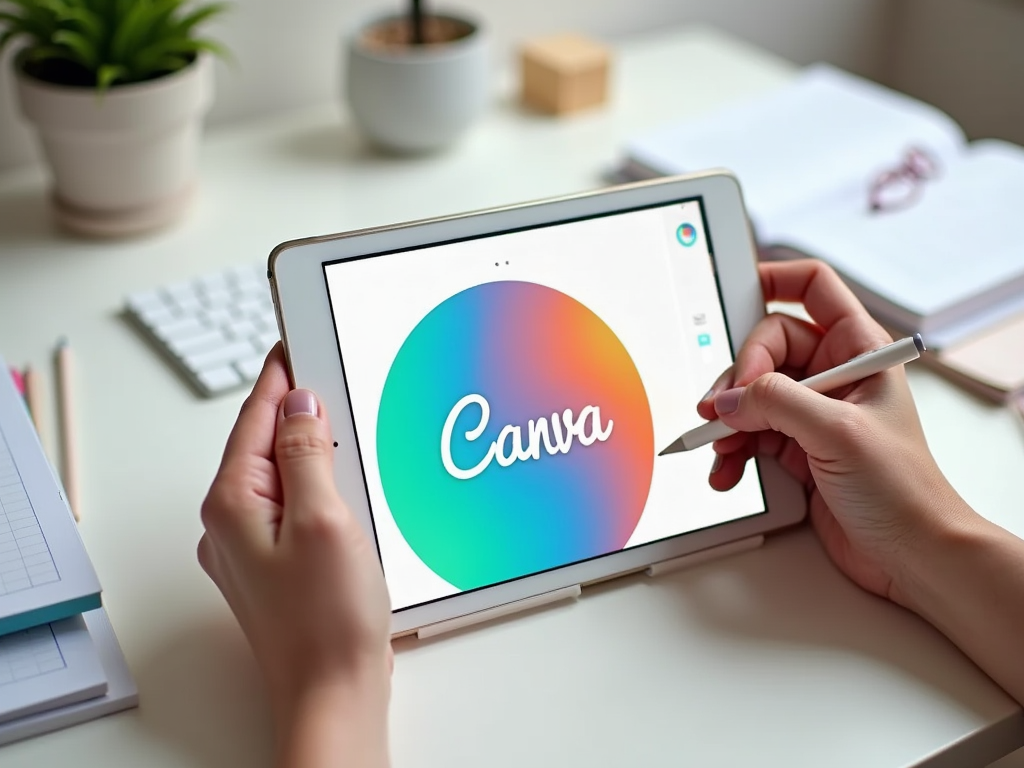In today’s visually driven world, the ability to create eye-catching graphics is a valuable skill. Whether you’re a business owner, a marketer, or simply a creative individual looking to express your ideas, Canva opens up a realm of possibilities for producing stunning visual content. This user-friendly platform not only simplifies design but also empowers people of all skill levels to bring their creative visions to life. With Canva’s extensive library of templates, images, and tools, you can effortlessly design everything from social media posts to presentations. Plus, the collaborative features make it ideal for team projects. Dive into this guide to unlock the potential of Canva and start creating your visual masterpieces.
First, you’ll need to get started by signing up for an account. But don’t worry; the process is straightforward and can be done in a matter of minutes. Understanding how to navigate the platform is key to making the most of its features. By the end of this guide, you will have mastered the basics of using Canva effectively, allowing you to focus on what really matters—your creativity.
Step 1: Sign Up and Explore the Dashboard

Creating a Canva account is the first step towards bringing your designs to life. You can sign up using your email, Google, or Facebook account. Once you’re in, you’ll land on the dashboard, where countless design possibilities await. Take a moment to explore the various options available to you. From templates to design elements, there’s something for every project. Familiarizing yourself with these tools will significantly enhance your design experience.
- Templates for every occasion
- A vast library of images and icons
- Design tools such as grids and alignment options
Step 2: Choose the Right Template

Canva provides an extensive library of templates designed to suit various needs and styles. Whether you’re designing for social media, events, or business presentations, there are numerous options to choose from. Selecting the right template is crucial as it sets the tone for your entire design. You may want to filter templates based on categories, or simply search for keywords related to your project. This will help you find templates that align with your aesthetic and purpose.
Step 3: Customize Your Design
Once you’ve selected a template, it’s time to make it your own. Customization is integral to ensuring that your design reflects your unique taste and branding. You can edit text, change colors, and swap out images seamlessly. Engage with the platform’s tools to modify elements and structures within your design. Experimentation is encouraged, as it leads to innovation and originality. Remember to utilize Canva’s features to develop a design that truly stands out.
- Utilize your brand colors and fonts for consistency.
- Make sure to maintain a clear and cohesive design style.
- Don’t overcrowd your visuals; space is equally important.
Step 4: Adding Images and Elements
Visual elements are the heart of any design. Great images can capture attention and convey messages effectively. In Canva, you’re not just limited to your uploads; there is a vast library of stock photos, illustrations, and icons at your disposal. Search for elements that resonate with your project’s theme and aesthetic. Incorporating shapes and other elements can enhance your overall visual narrative. This step is crucial for creating engaging content that draws the viewer in.
| Element Type | Description | Use Case |
|---|---|---|
| Images | Visually impactful elements that convey emotions. | Social media posts, ads |
| Icons | Small graphics that represent ideas or actions. | Infographics, presentations |
| Shapes | Basic forms to enhance layout and design. | Backgrounds, highlights |
Step 5: Incorporating Text and Fonts
The text you choose and how you format it can make or break your design. Well-placed and thoughtfully chosen text enhances clarity and engagement. Canva allows you to add various text boxes, making it easy to arrange your message effectively. Select fonts that complement your visuals, focusing on readability and style. Mixing fonts can be effective, but it’s key to ensure they work together harmoniously. Therefore, keep your audience in mind and adjust your font choices accordingly.
- Pair serif and sans-serif fonts for contrast.
- Limit your design to two or three font styles.
- Use font hierarchy to guide the viewer’s attention.
Step 6: Utilizing Canva’s Design Tools
Canva shines through its myriad of design tools that allow you to create polished projects. These tools include grids, alignment guides, and various image filters. Using grids can help maintain a clean and organized layout, while alignment options ensure that every element is where it needs to be. Image filters can change the mood of your design, giving it a more professional feel. Experiment with these tools to see how they enhance your project.
Step 7: Collaborating with Others
Collaboration becomes straightforward with Canva’s sharing features. You can invite team members to work on your design by sending them a link. This not only allows for co-editing but also facilitates feedback and discussion. Sharing designs in real-time encourages creativity and ensures everyone is on the same page. Canva’s collaborative nature can significantly elevate the quality of the final output.
Step 8: Downloading and Sharing Your Design
After putting in the effort to craft a beautiful design, it’s time to share your masterpiece with the world. Canva allows for downloading your designs in various formats, including PNG, JPEG, and PDF. Choose the format that best suits how you plan to use the design. Additionally, you can share your creations directly to social media platforms or via a unique link, making it simple to distribute your content widely. Your designs are now ready to make an impact!
Conclusion
Canva is a powerful and accessible platform that democratizes design for all users. By following these eight steps, you can create visually compelling content that stands the test of time. Whether you’re a novice exploring graphic design or a seasoned professional looking to streamline your workflow, Canva provides the tools you need to bring your ideas to life. Embrace your creativity, explore the features, and make the most of your design journey. Your visual content will surely capture attention and communicate effectively, no matter the medium.
Frequently Asked Questions
- What is Canva? Canva is a graphic design tool that simplifies the process of creating visual content through pre-designed templates and a user-friendly interface.
- Is Canva free to use? Yes, Canva offers a free version with a wide range of features, although there is also a paid subscription for access to premium tools and templates.
- Can I use Canva for commercial purposes? Yes, Canva allows users to create designs for commercial purposes, but it’s important to review license agreements for any stock images used.
- What types of content can I create with Canva? You can create various content types, including social media posts, presentations, infographics, posters, and more.
- Is it easy to collaborate on Canva? Absolutely! Canva allows you to invite team members to edit and comment on your designs for better collaboration.
- Can I access Canva on a mobile device? Yes, Canva has mobile applications available for both iOS and Android, allowing you to design on the go.